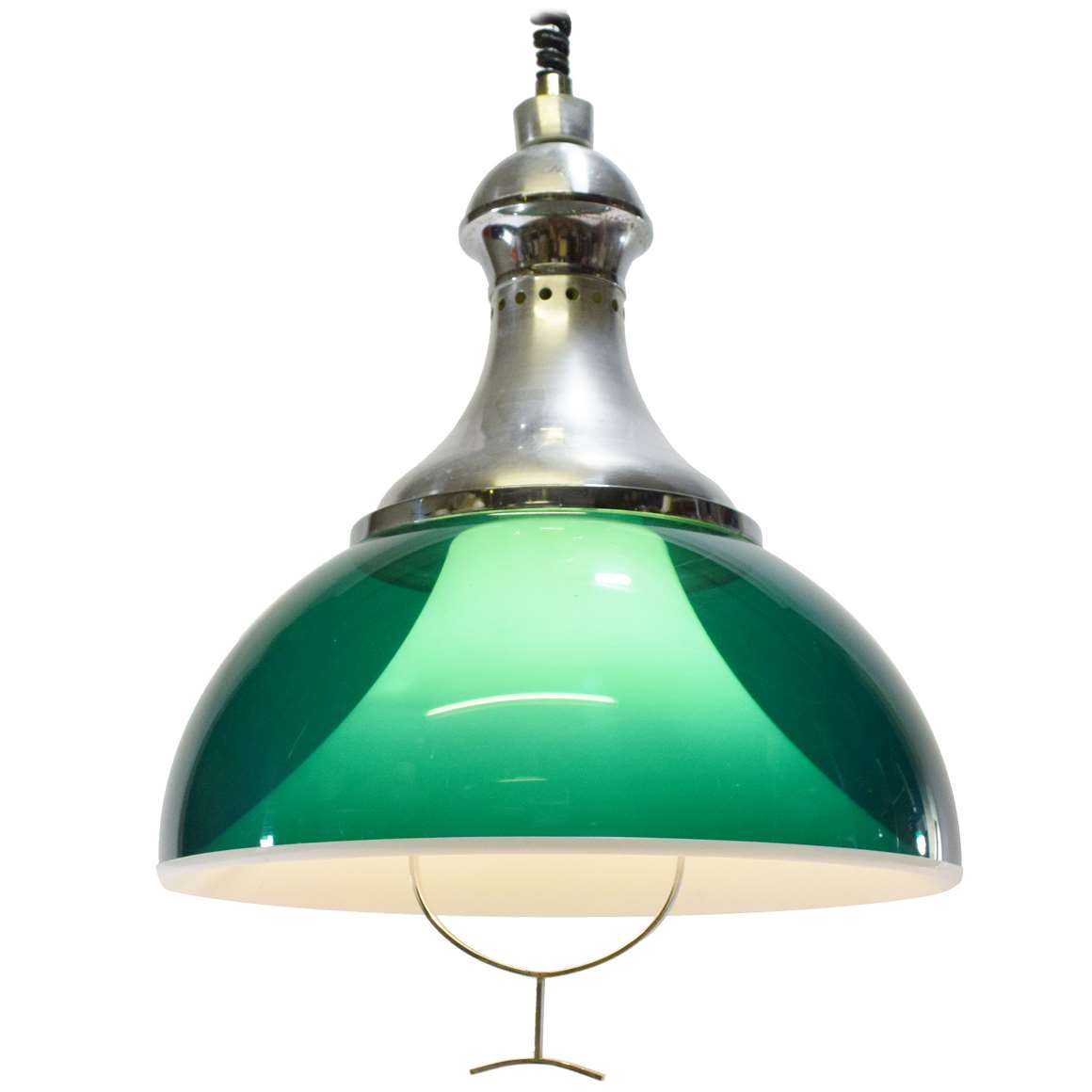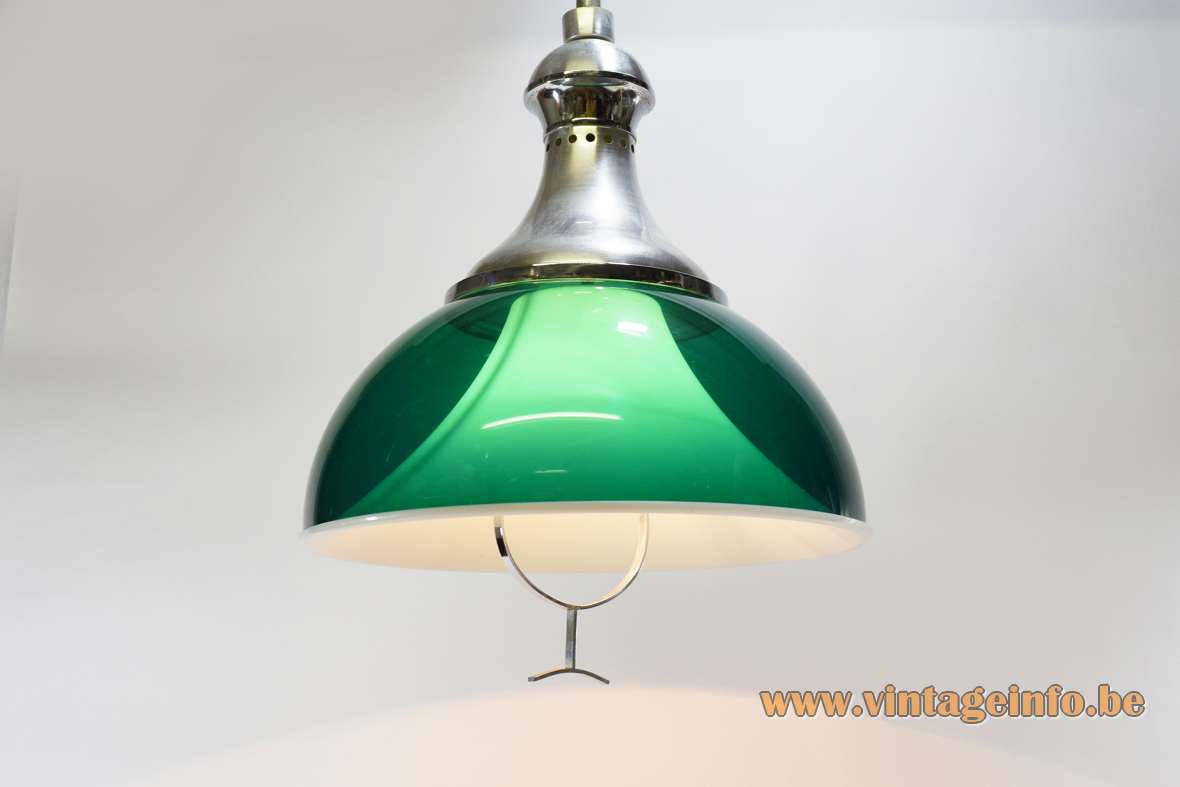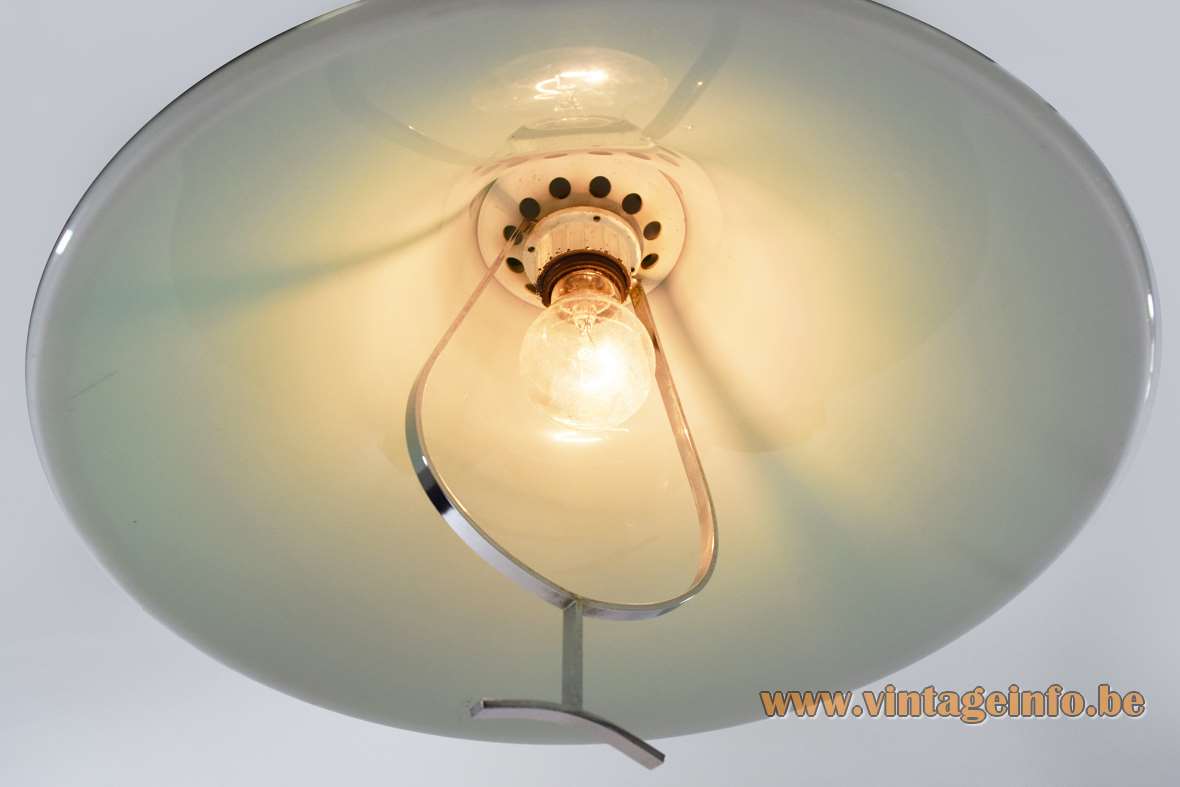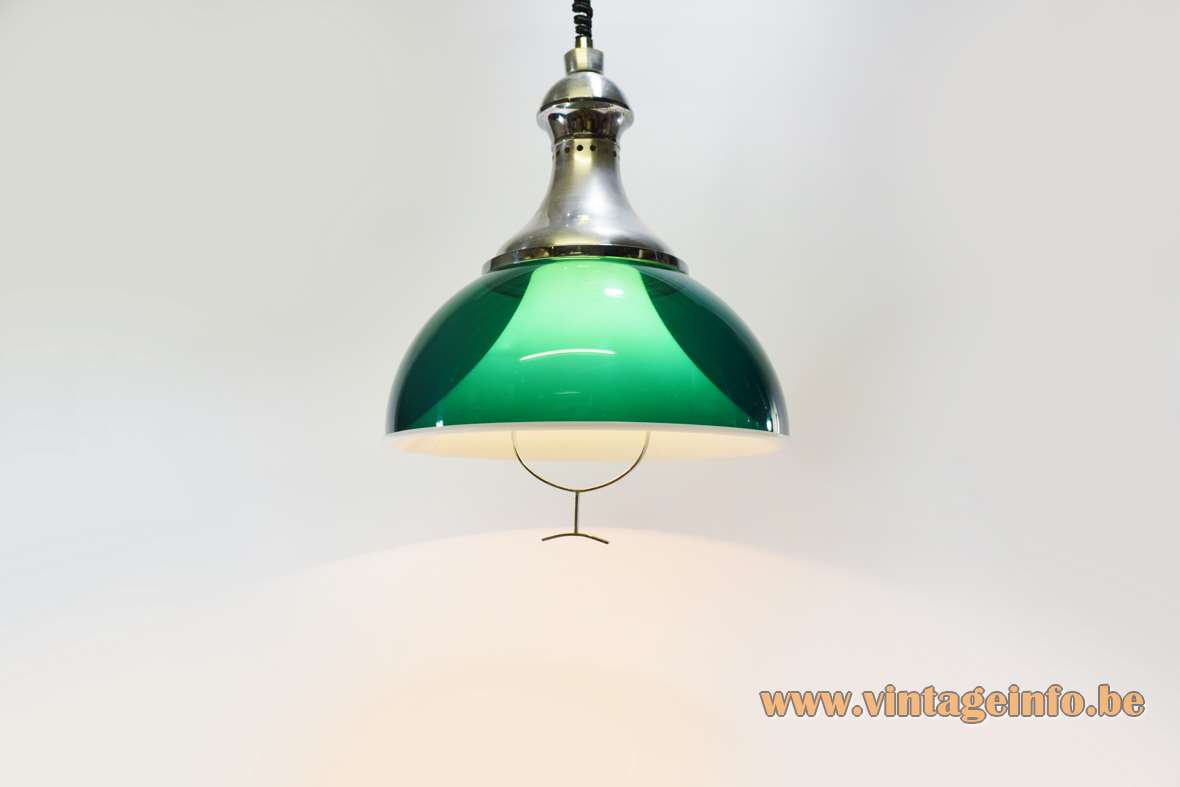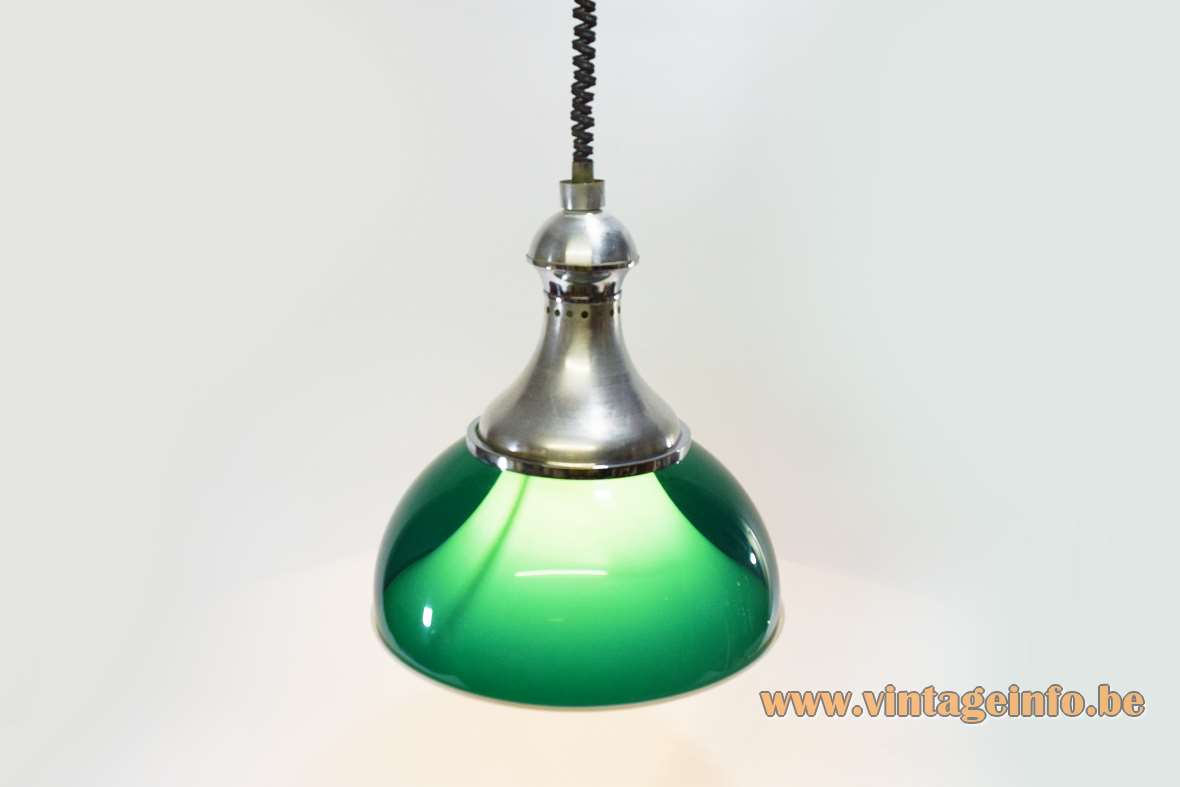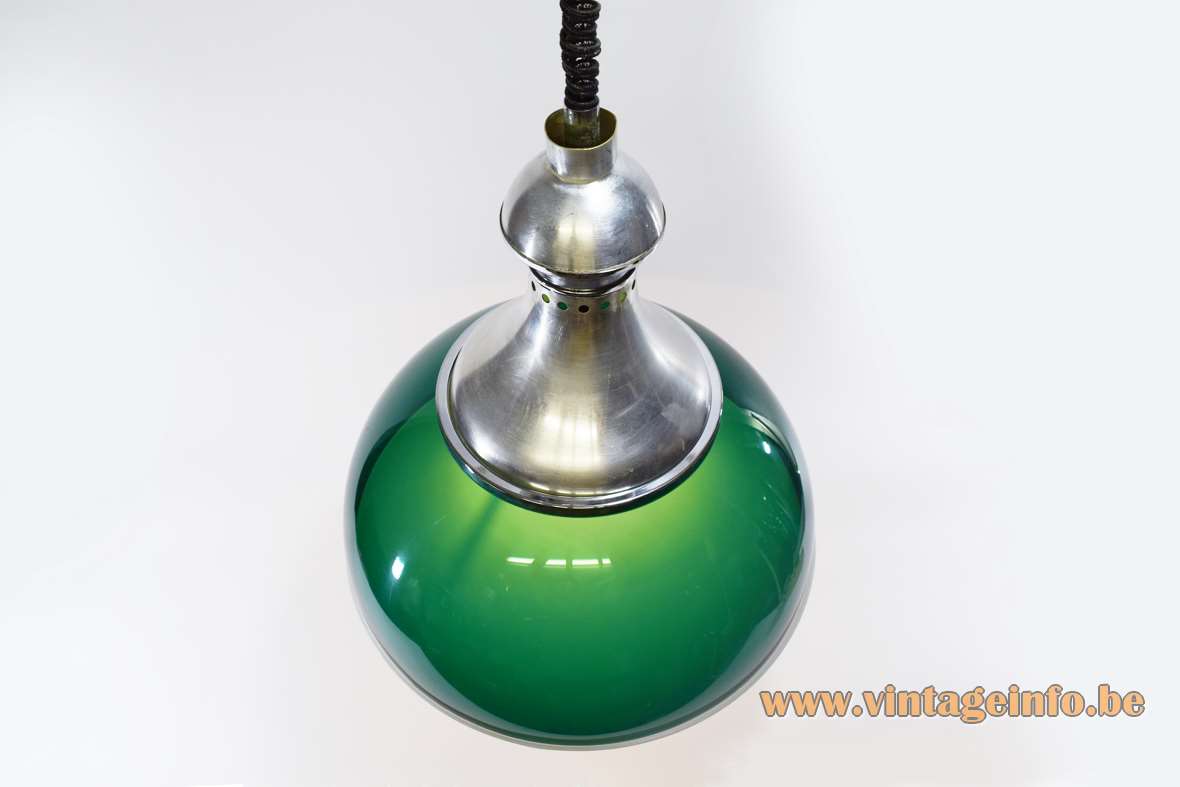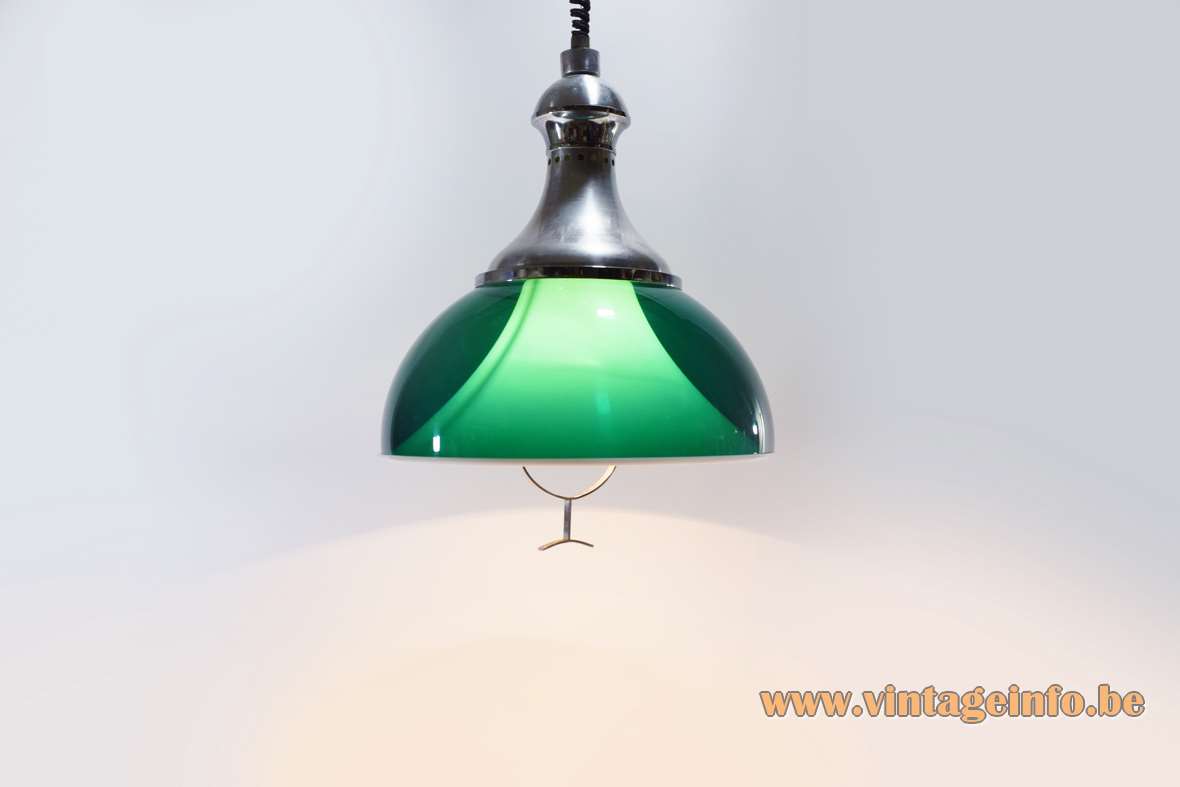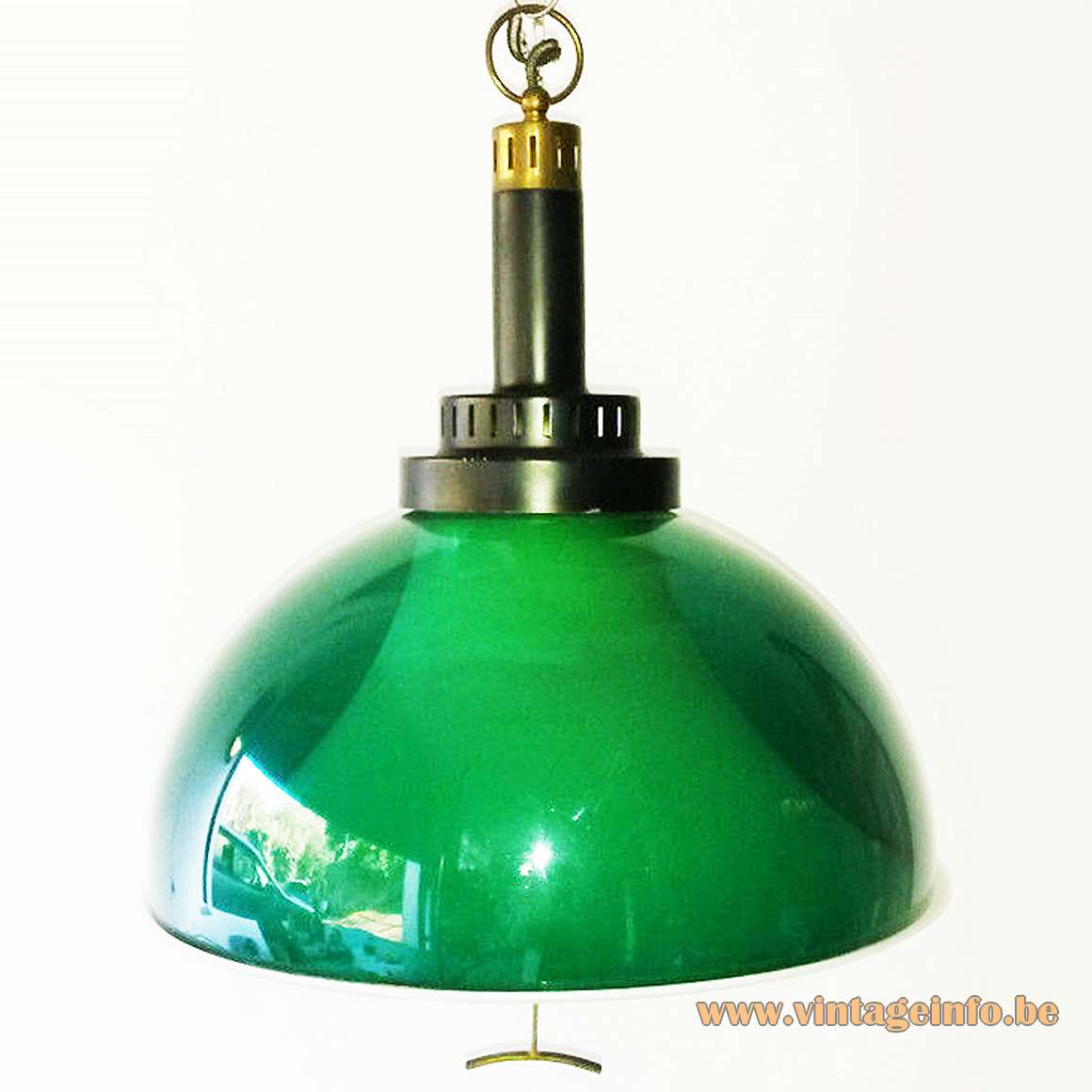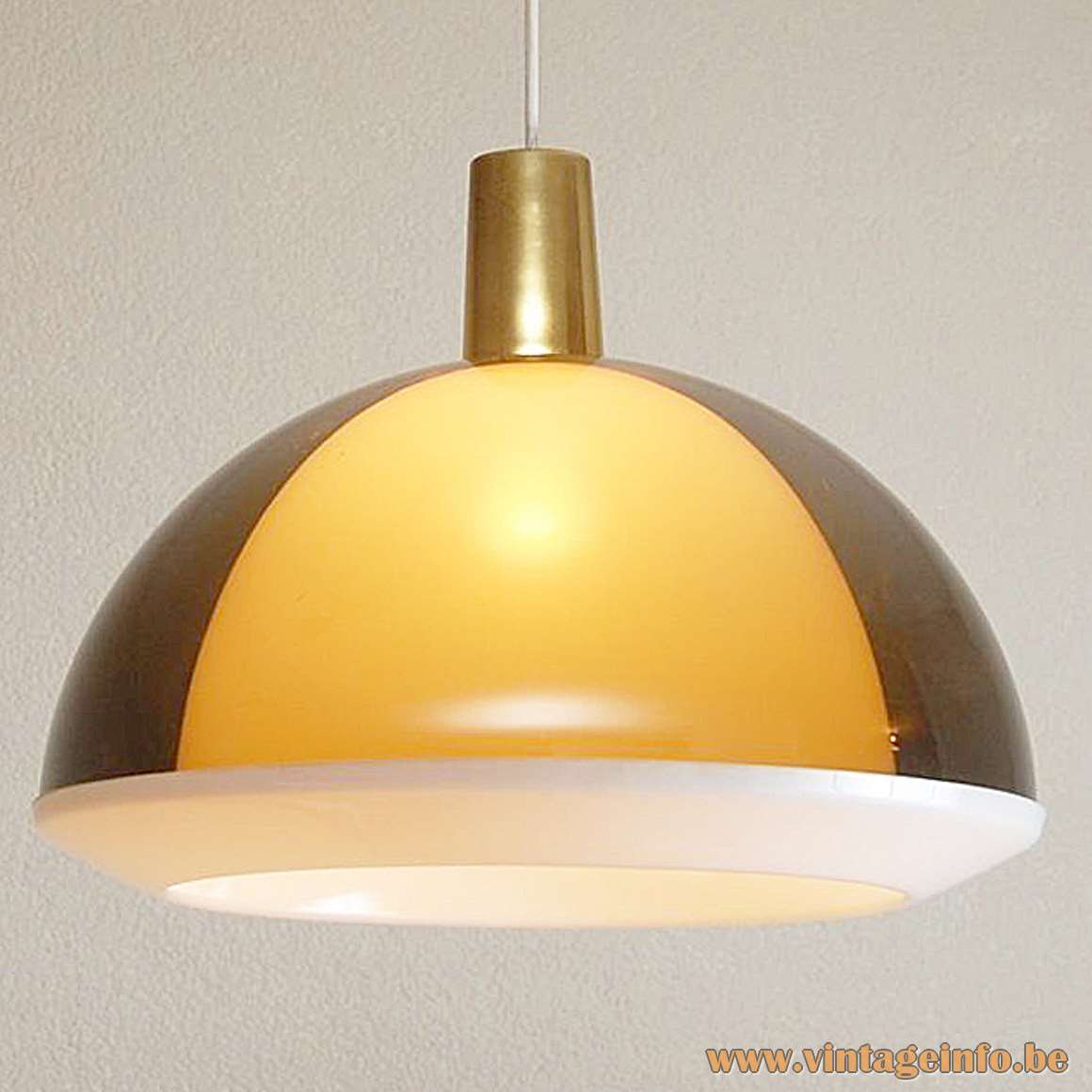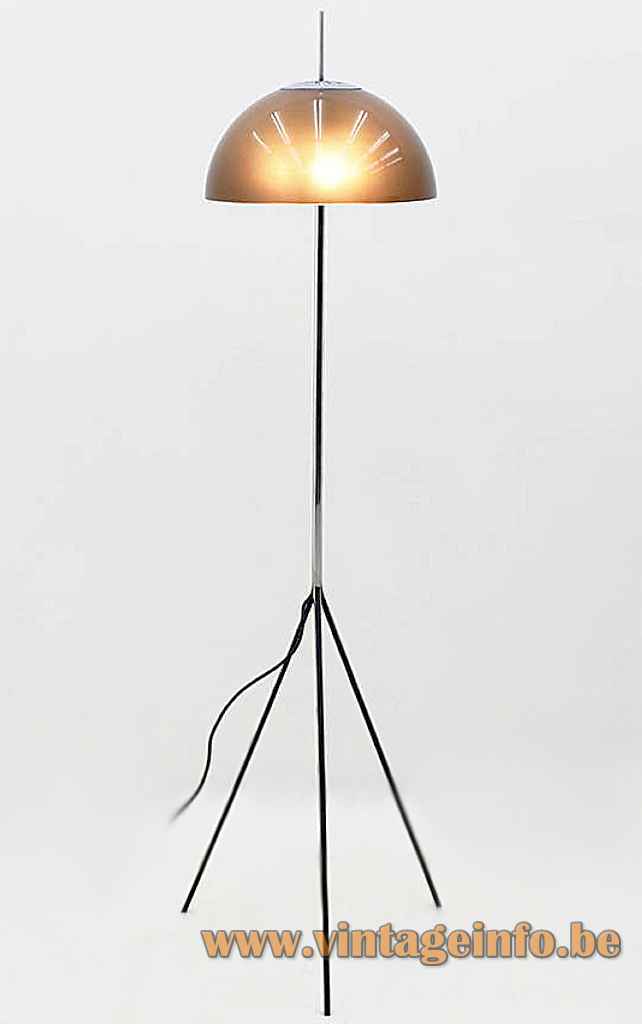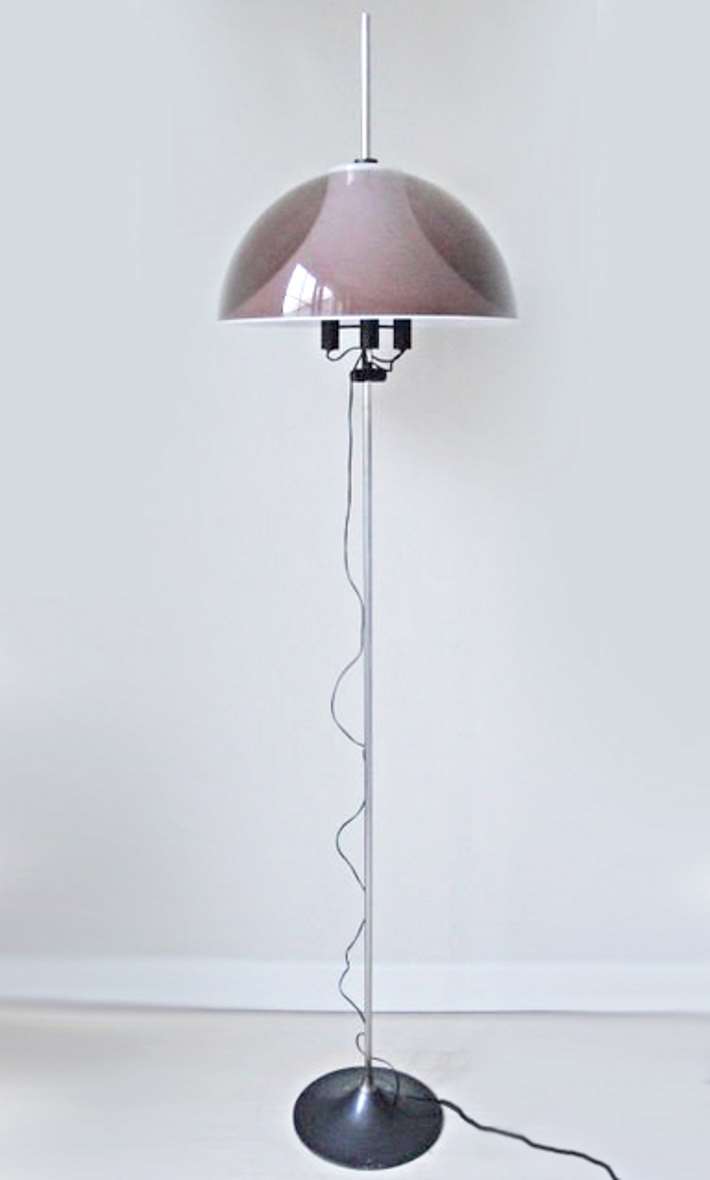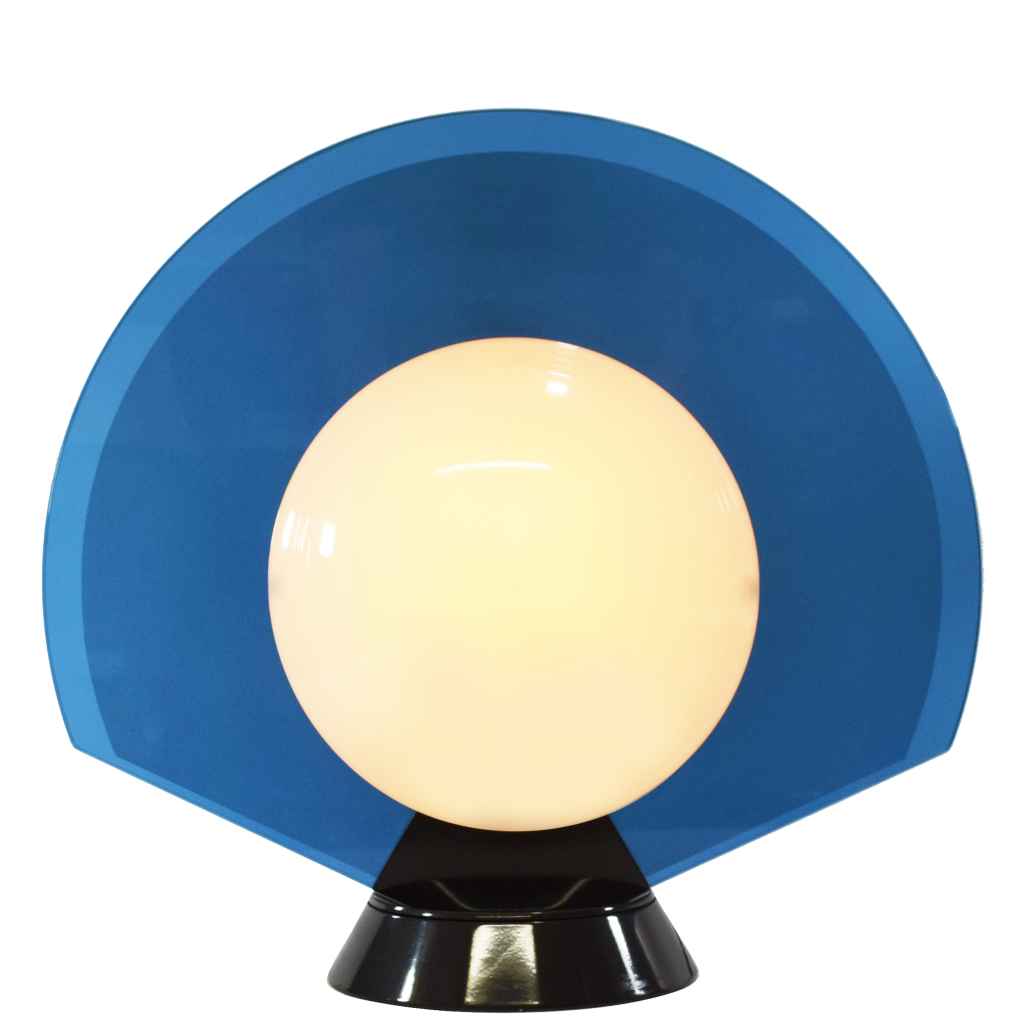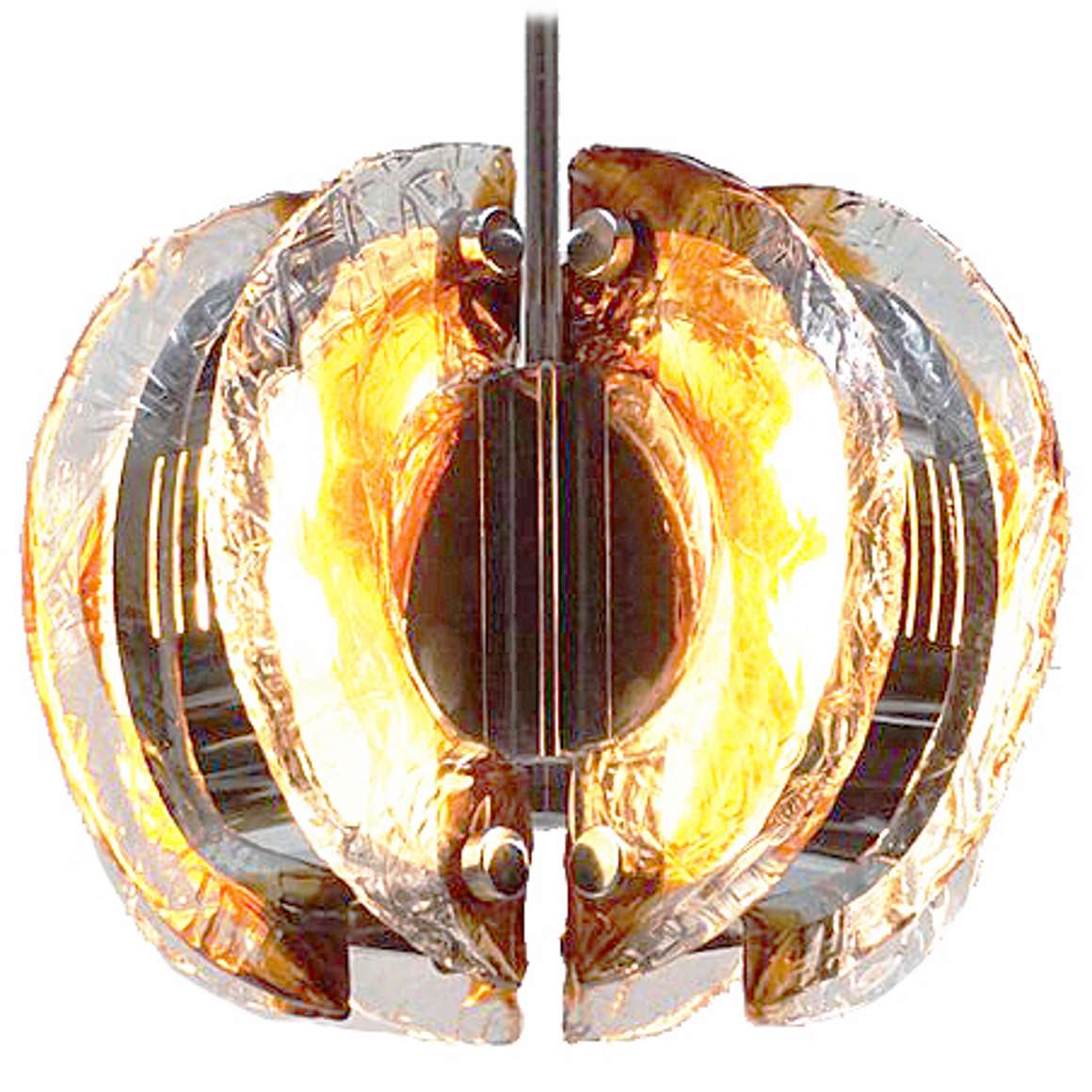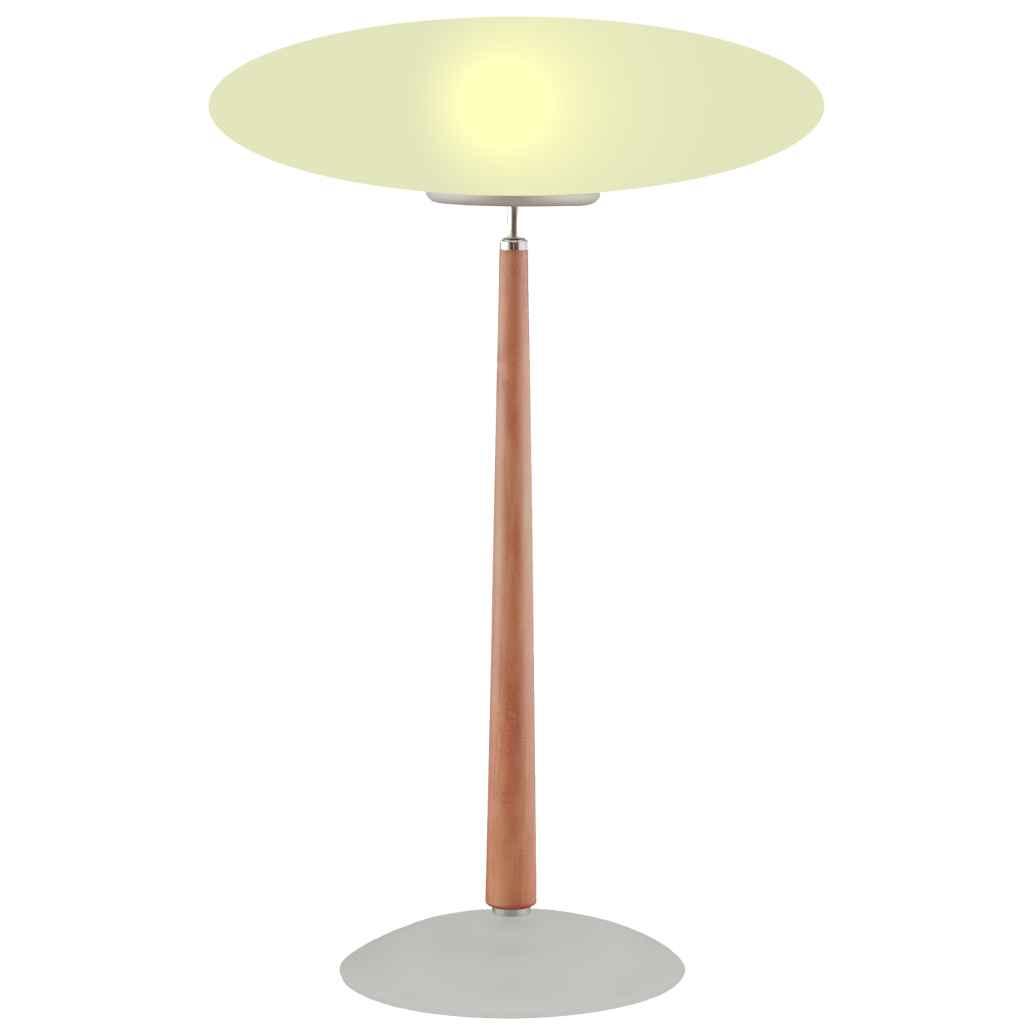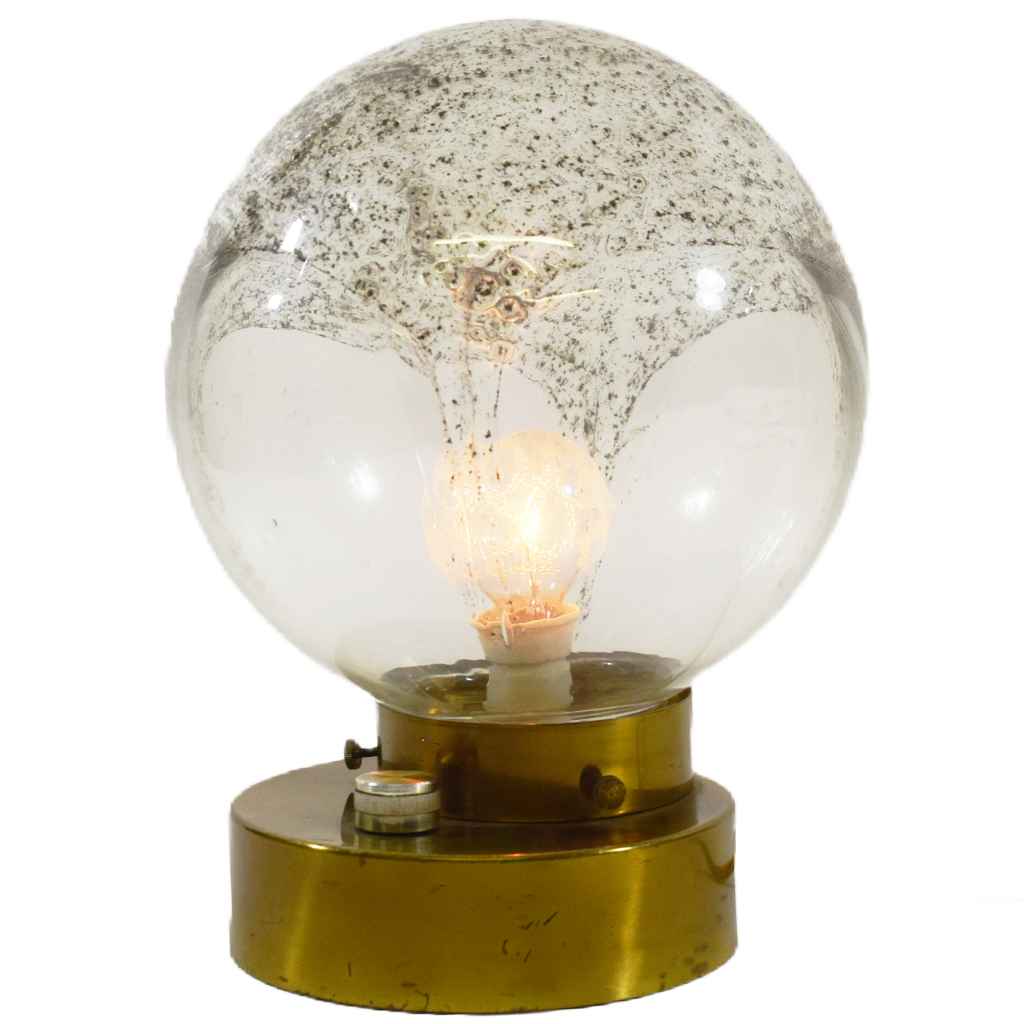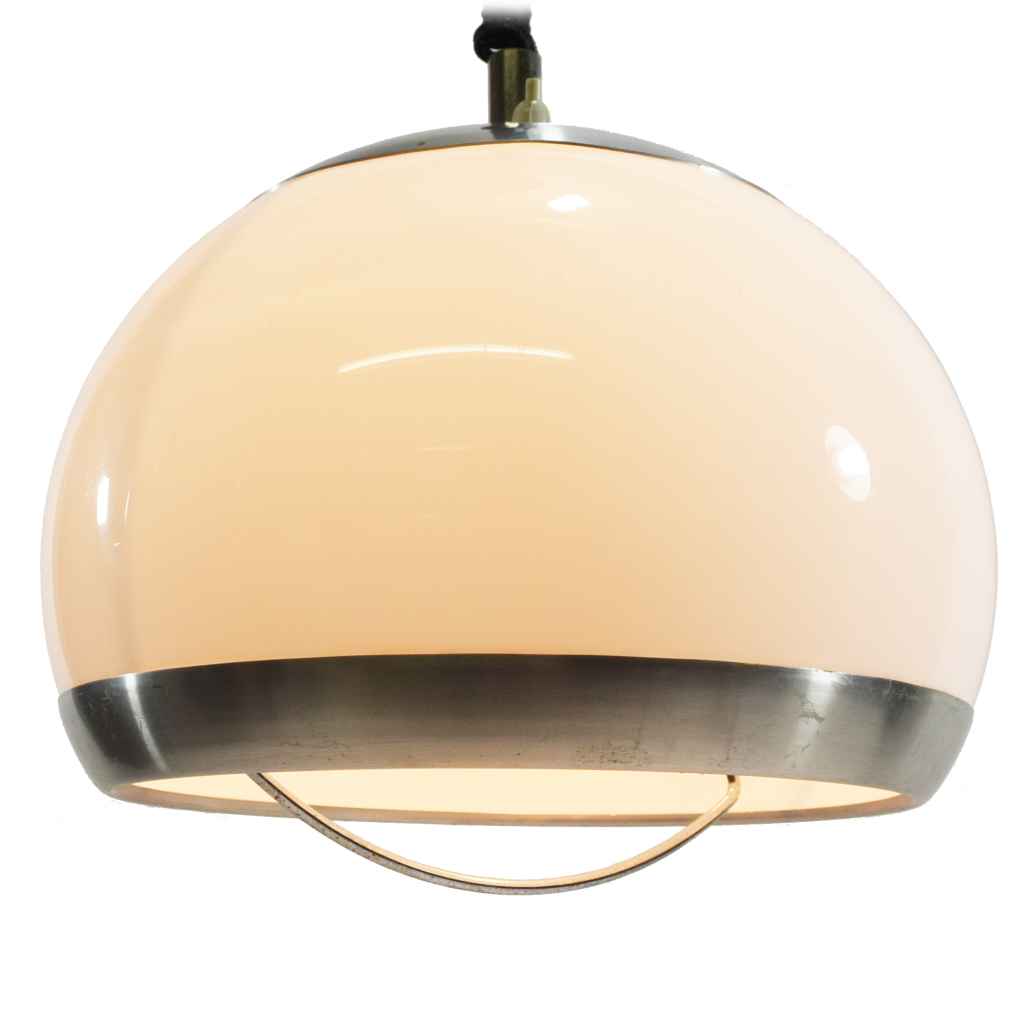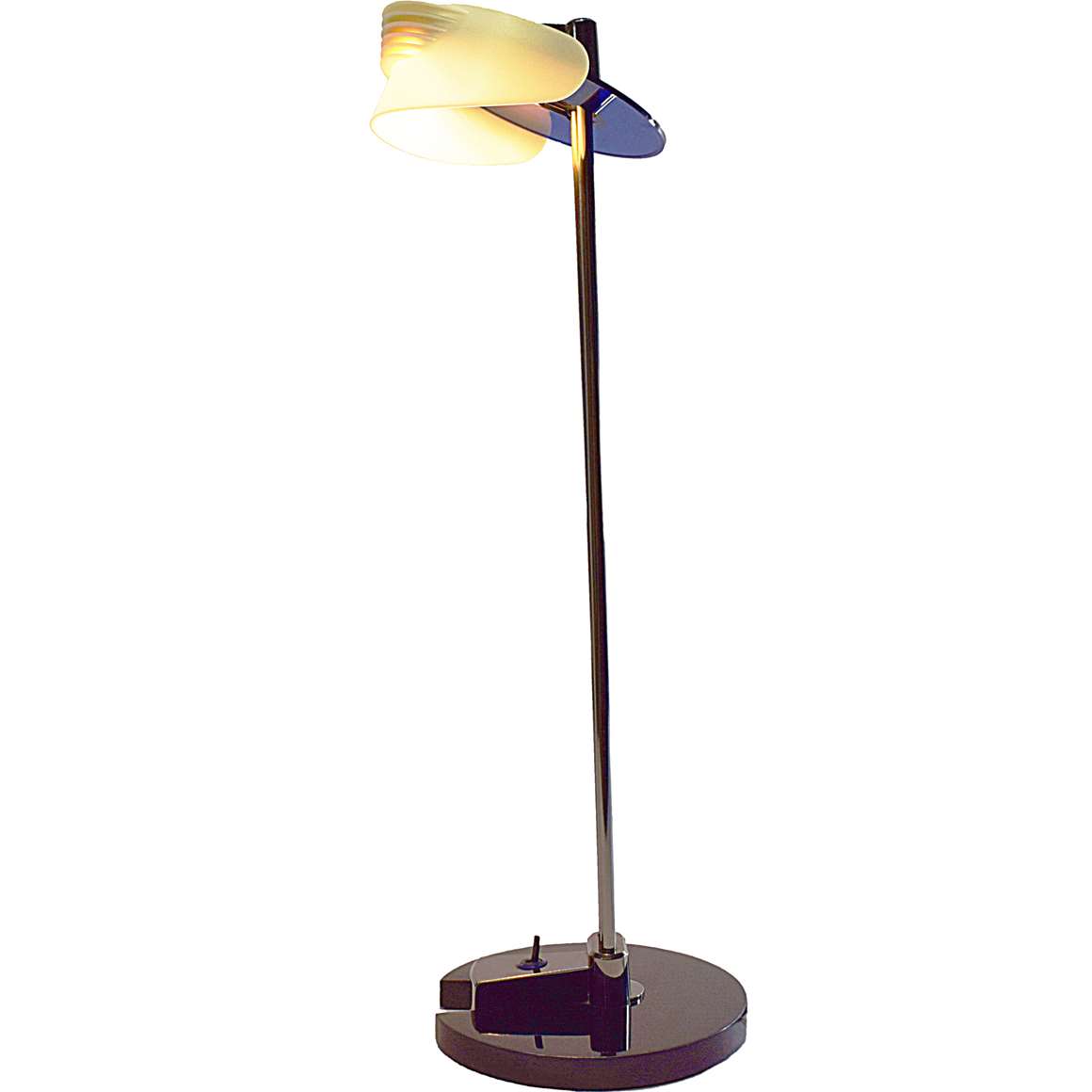Green Acrylic Rise & Fall Pendant Lamp
Materials: Half round clear green acrylic lampshade. Conical white acrylic diffuser. Chromed metal (iron) concave top. Chrome handle. Aluminium canopy. Some aluminium, metal and plastic parts. Metal rise & fall mechanism. Bakelite E27 socket.
Cord: This one has an adjustable rise & fall mechanism (40 – 140 cm / 15.74 – 55.11”). It can be easily adjusted in height by pulling the chrome handle underneath.
Height: 51 cm / 20.07”
Width: ∅ 40 cm / 15.74”
Electricity: 1bulb E27, 1 x 75 watt maximum – 110/220 volt.
Any type of light bulb can be used. Not a specific one preferred.
Period: 1960s, 1970s – Mid-Century Modern.
Designer: Based on a design by Yki Nummi from 1959.
Manufacturer: To be appraised.
Other versions: This green acrylic rise & fall pendant lamp exists in several colours. Also produced with a different top, as you can see on the left. These pendant lamps were also made without a handle and without the rise & fall mechanism.
Esperia
The Italian company Esperia made a very similar lamp, but that’s the closest I could get.
Stilux
This pendant lamp is often sold as a lamp made by the Italian company Stilux, but it is not. I never found one with a Stilux label. Something the company almost always did with their pendant lamps.
The rise & fall mechanism was made by an unknown company. No label or name is present. Completely different build than the plastic rise & fall mechanisms from the famous Rolly company, from Italy.
Pendant lamps in this style were produced by many companies in several variations. It has similarities with the Kuplat (Bubbles) lamp, designed by Yki Nummi and made by Sanka Oy for Stockmann Orno, Finland since 1959.
Elio Martinelli designed his version of this lamp for his company Martinelle Luce from Italy around 1962. In The Netherlands his lamp was sold by Artimeta from Soest. Source: Goed Wonen magazine 1962.
Later in the sixties Gino Sarfatti designed a lamp for his own company Arteluce; the Moon pendant lamp, model 2130 from 1969, also made as a tripod floor lamp. Source: Gino Sarfatti. Selected Works 1938 – 1973. Written by Marco Romanelli and Sandra Severi. Published by Silvana Editoriale in 2012.
Also Lyktan from Sweden, Gepo (floor lamp below) from The Netherlands produced similar lamps.
In the UK it was Lumitron who produced comparable lamps designed by Robert Welch. The ItalianHarvey Guzzini produced a table lamp. Hustadt-Leuchten from Germany produced an arc floor lamp. Many other companies made variations of this pendant lamp and floor lamp.
Yki Nummi
Yki Nummi (1925-1984) designed his pendant lamp in 1959. It was named Kuplat and was produced by Sanka Oy, today in production by Innolux.
Yki Nummi was born on October 31, 1925 in China as a child of a Finnish missionary. Later on, he studied mathematics and physics in Turku and Helsinki and afterwards he studied design at the School of Applied Arts in Helsinki from 1946 until 1950.
He worked as lighting designer for the Finnish Stockmann-Orno A.B. light factory from 1950 to 1975 and designed hundreds of light fixtures.
The best-known light fixtures are the Modern Art table lamp in 1955 and the Lokki (Sky Flyer or Flying Saucer) pendant light in 1960, currently manufactured by Keraplast and Innojok Oy (Innolux), both Finish companies. In Germany and The Netherlands these lamps are produced by Adelta.
Keraplast and Adelta also produces the Modern Art table lamp. Keraplast has named it the New York table lamp. The Modern Art table lamp was acquired by the MoMA museum in New York, for their collection as a modern European Design Product of 1958, and that’s how the lamp got it’s name.
Yki Nummi participated in a large number of exhibitions and fairs. His works were awarded gold medals at the Milan Triennials of 1954, 1957 and 1960. He received the Pro Finlandia medal in 1971. Nummi also designed spotlights for the world-exhibition in 1958 in Brussels, Belgium.
Yki Nummi summarised his vision by saying ”People don’t buy lamps, they buy light ”.
Yki Nummi passed away in Finland, only 58 years old on March 12, 1984.
Stockmann-Orno and Sanka Oy
The acrylic lamps of Stockmann-Orno were made by Sanka Oy, founded in 1950. The company focused on the design of acrylic plastic, which was a new material at this time. Sanka still exists but since the seventies they produce showers.
Stockmann-Orno A.B. was a major lighting factory, founded in 1921 in Helsinki and moved to Kerava in 1937. Later the name changed in Thorn-Orno. The factory closed its business in 2001, but Thorn still exists. Thorn is now part of the Zumtobel Group.
Elio Martinelli
Elio Martinelli was born in Lucca, Tuscany in 1921. He studied as a set designer at the Institute of Fine Arts in Florence. At first, he worked for his father’s business within the lighting sector. Soon he began designing and installing lighting systems that resulted in the founding of his own company Martinelli Luce in 1950. Elio Martinelli designed many famous lamps. Many of them are still in production.
Gino Sarfatti
Gino Sarfatti was born in Venice, Italy in 1912 and studied aero naval engineering at the University of Genoa. Mr. Sarfatti died at Gravedona, Como, Italy in 1984 (some sources say 1985). He founded his company Arteluce in 1935 and sold it to Flos in 1973.
Acrylic: often named by its commercial name: Perspex, Plexiglas, Crylux, Acrylite, Lucite, is a thermoplastic.
Many thanks to Fred for the help!
